The Lumix GX series has always been the Golden mean of Panasonic mirrorless digital cameras: the best compact, easy to operate and not inferior to older models as far as image quality. Lumix GX1 for a long time was the only link between budget Lumix GF and GH Lumix more professional, but with the GX7, the concept has changed: the camera was larger, heavier, and fancier.
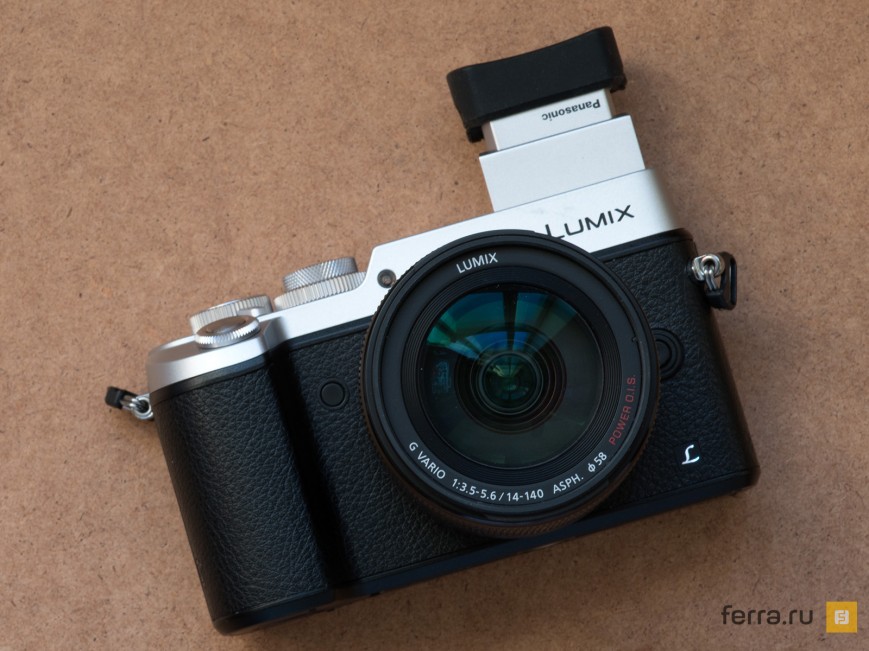
Panasonic Lumix GX8
New Lumix GX8 continues to develop in the same direction and offers us “the full forcemeat”: 20-megapixel matrix format Four Thirds electronic viewfinder, faster burst shooting, and – for the first time in the line – hybrid image stabilization system. True, and the camera a lot. Let’s find out if the manufacturer to find the right balance.
What has changed?
With the advent of 4K Panasonic actively promotes the idea of saving individual frames from the video as photos. One screenshot is essentially an 8-megapixel photo, so overall, the idea looks sensible. However, from the point of view of a professional it does not make much sense, because the detail in a single shot (albeit reduced to 8 MP) will be much higher than that of the video frame. General differences between the Lumix GX7 and GX8 are shown in the table.
Panasonic Lumix GX8
Panasonic Lumix GX7
Class
mirrorless interchangeable-lens camera
mirrorless interchangeable-lens camera
Matrix
CMOS (17,3×13 mm), 20 MP
CMOS (17,3×13 mm),16 MP
Mount
Micro Four Thirds
Micro Four Thirds
Photo format
JPEG, RAW (5184 x 3888)
JPEG, RAW (4592 x 3448)
Video format
MPEG4, AVCHD: 4K (3840×2160@30p/24p), Full HD (1920×1080@60p/30p), HD (1280×720@60p/30p)
MPEG4, AVCHD: Full HD (1920×1080@60p/30p), HD (1280×720@60p/30p)
Sensitivity range
ISO 200 – 25600
ISO 125 – 25600
The range of exposure
1/16000 – 30 c
1/8000 – 30 c
Continuous shooting
12 fps
5 fps
Screen
OLED tilt-swivel design, diagonal 3 inches and a resolution of 1 040 000 points
TFT LCD, tilted design, diagonal 3 inches and a resolution of 1 040 000 points
Viewfinder
e-the resolution at 2.36 million dots, 100% frame coverage, an increase of 1,54 x
e, a resolution of 2.76 million dots, 100% frame coverage, magnification is 1.39 x
The built-in flash
no
is there a guide number of 7 meters at ISO 200
Wi-Fi
built-in module + NFC
built-in module + NFC
Memory
SD/SDHC/SDXC
SD/SDHC/SDXC
Stabilization
mechanical (shift matrix)
mechanical (shift matrix)
Interfaces
USB 2.0, HDMI, microphone input
USB 2.0, HDMI, microphone input, headphone output
Battery
DMW-BLG10E Li-ion, 1025 mAh
DMW-BLG10E Li-ion, 1025 mAh
Dimensions and weight
133x78x63 mm, 487 g
123x71x55 mm, 402 g
Approximate price at the time of publication
Body – 85 000 rubles
Kit – 96 000 roubles
Body – 33 000 rubles
Kit – 39 000 rubles
Too long in Panasonic uses a 16-megapixel matrix format Micro Four Thirds, so the update was a long time coming, and Lumix GX8 resolution increased to as high as 20 megapixels. Production technology of the sensor has not changed, as well as maximum sensitivity. You want to do was increase the resolution. But the super-short shutter speed is not exactly hurt – Lumix GX8 right out of the box can work out the shutter speed to 1/16000 seconds. For previous cameras, this possibility was only added in later firmware upgrades. But for Lumix GX8 already provided a software update that extends the functionality. About it later.

Screen design Panasonic Lumix GX8
The screen got tilt-and-swivel design as the Lumix GH, and has received OLED-matrix instead of LCD. Her picture is better seen in the street in solar weather, but is it important if there is electronic viewfinder?
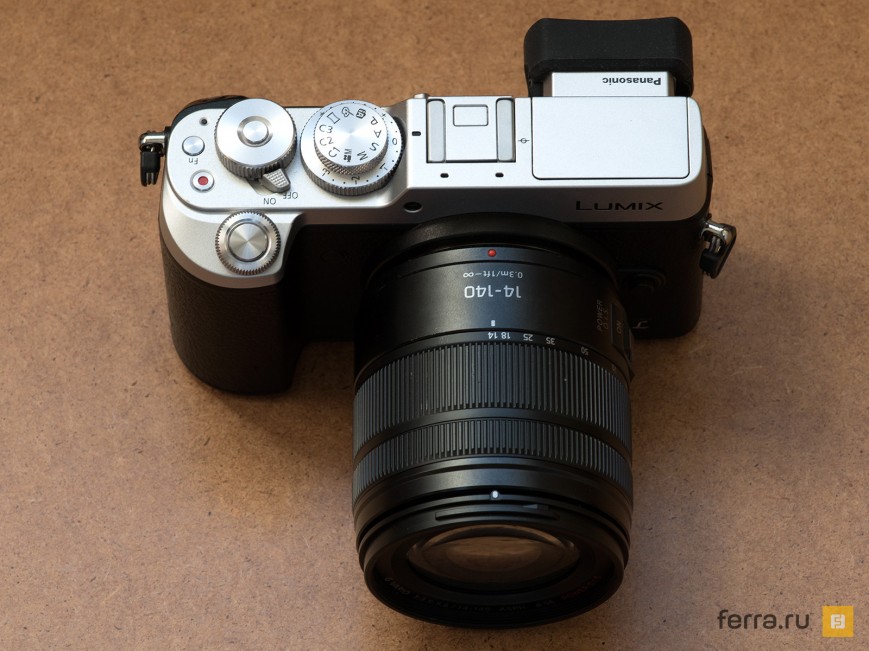
Panasonic Lumi GX8 c lens 14-140 mm
The viewfinder is a little reduced in resolution, but despite this, overall was better due to the greater magnification. Now this is perhaps the biggest EVF on the market. Even cameras Sony Alpha A7 of the second generation can envy.
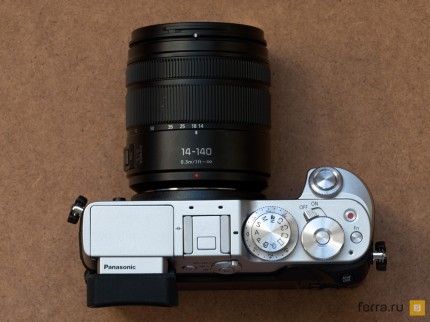
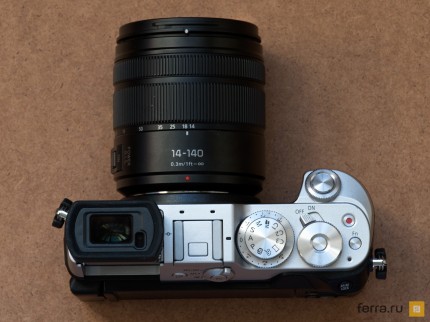
From built-in flash had to give up altogether – it’s a small loss. But I would have reacted with more understanding, if the camera was a bit smaller or lighter. But in the end, all the opposite: no flash, and the carcass increased and became heavier.
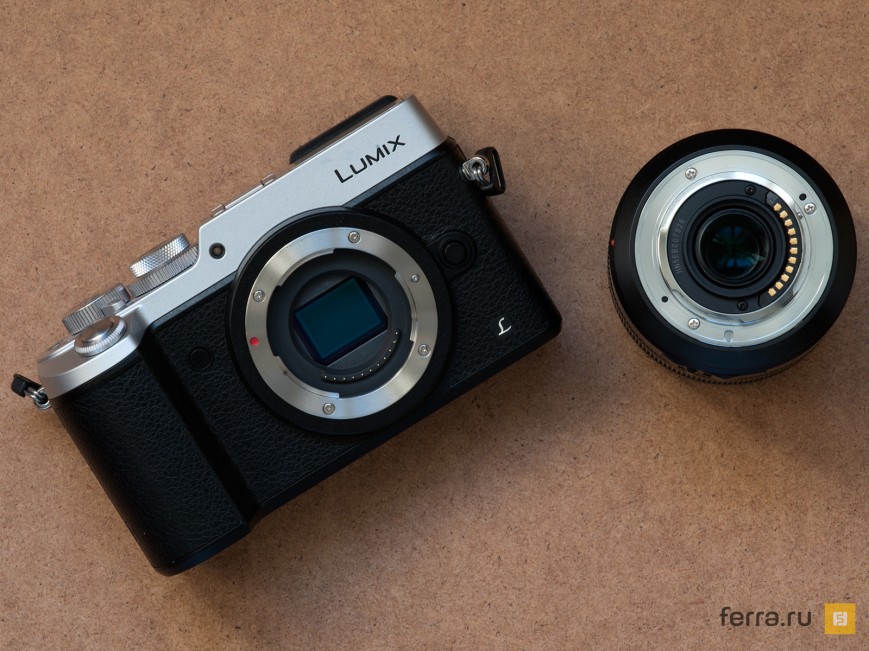
Metal mount Panasonic Lumix GX8
And finally, the camera learned to record video in 4K with a bitrate of 100 Mbps and got a system of stabilization, which can simultaneously use two methods: manual – in the camera, and optical – lens. In other words, installation of stabilized optics enhances the effect of the built-in stabilizer. Brilliant idea, but somehow the combined stabilizer works only in photo mode, not video.
What do you feel?
On the one hand, the new Lumix GX8 body feels reminiscent of powerful professional camera, which is just a pleasure to hold in hands. But on the other hand – from ideas originally incorporated into Lumix GX1, not a trace remained. Fans of the first model may be disappointed, but now the camera should be seen rather as a simplified version of the flagship Lumix GH4.
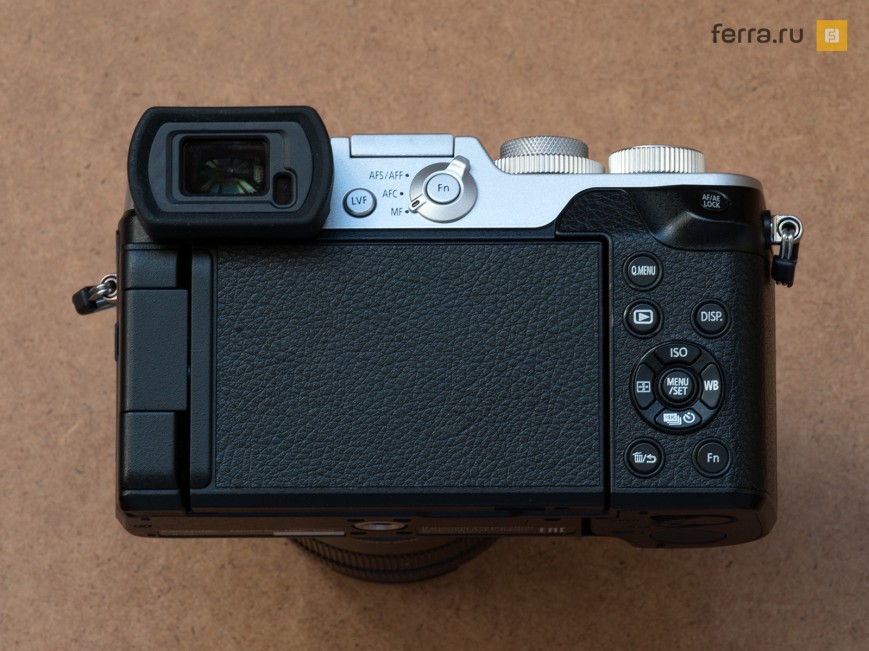
The back side of the housing, Panasonic Lumix GX8
The strength GX8 – control scheme. Almost all settings can be changed without entering the main menu: white balance, sensitivity, focus type, self-timer, drive mode, exposure compensation, recording format photos – all available by using combinations of the quick buttons or context menu. In addition, GX8 is characterized by the presence of two horizontal scrollers. One three-position, located on the rear panel under your thumb. The second scroller is off — surrounds the shutter button. Both elements have a very verified step and a nice tactile response when activated.

Controls on the rear panel of the Lumix GX8
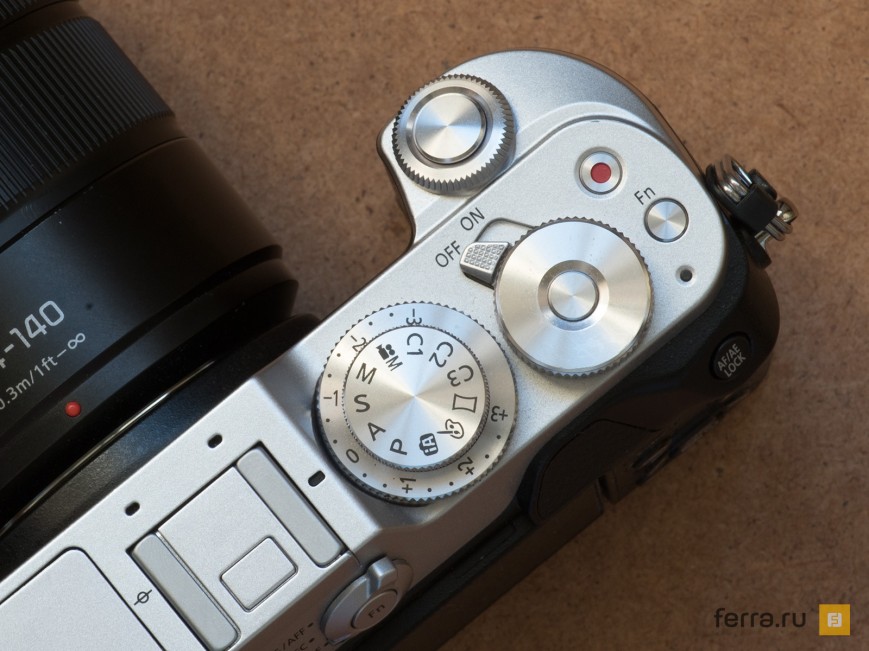
The controls on the top panel Lumix GX8
But two large disc on top, which is responsible for choosing the shooting mode and exposure compensation, can’t say the same. Their progress was too tight, and fluted edges – too sharp. To cut yourself on them, of course, impossible, but the effort to rotate the selector creates a little discomfort.
Display and viewfinder in a pair can provide great flexibility. Block the viewfinder by default is located at the back in the upper left corner – the same place the eyepiece is and rangefinder cameras and compact film cameras. But the Lumix GX8 design allows the unit to reject the viewfinder up and look out the peephole, in fact, located on the top panel.
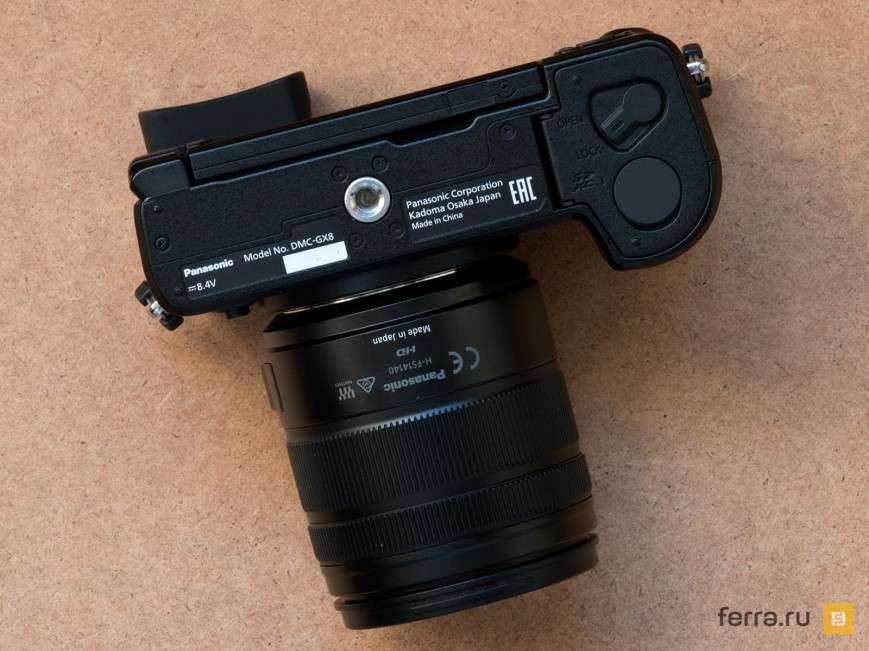
The lower side of the housing, Panasonic Lumix GX8
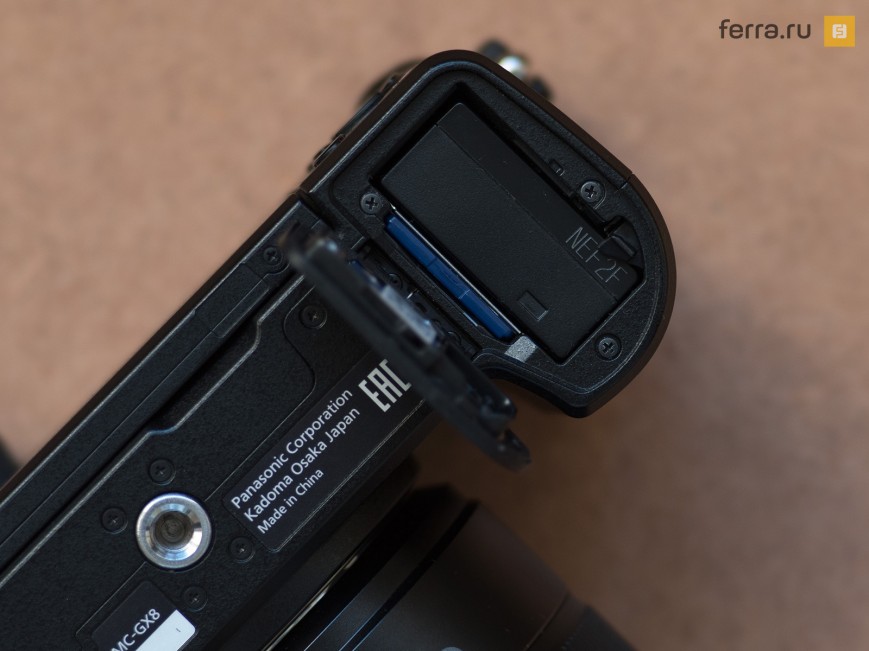
Compartment cover for battery and memory card
The screen tilts, rotates and is securely held in any position. In addition to the freedom in the choice of perspective this design bears in itself one more nice bonus: the glass screen can “hide” in the body, and the very – easily carry in a backpack without a case.
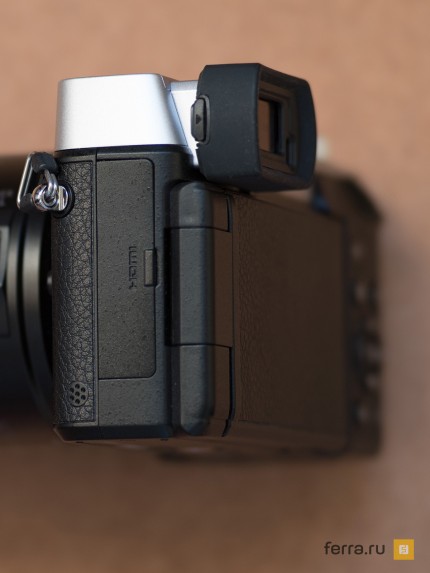
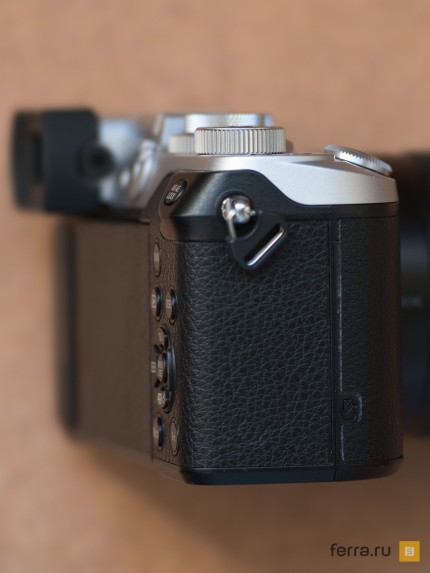
Yes, the screen is still touch, but finger control is organized very unobtrusive. For me touch is usually to select a point or area of focus. By the way, the size of the area you can change the two-finger gestures – the same as the zoom function works on any smartphone.
In General, despite all the contradictions, work with Lumix GX8 leaves pleasant memories. There are some ambiguous features, but this camera quickly get used to, and it does not matter – the first you have it or you’ve been working with mirrorless digital cameras Panasonic.
How to remove?
For dual image stabilization you will most likely need to update the firmware of the lens – without it the work is only mechanical system inside the “carcass”. If we talk about winning in the exhibition, a purely mechanical stabilization can compensate for about 2 stops of exposure, and the hybrid mode is about four.
But I have a question about the change in image quality with the new sensor excites you more. Honestly, no significant progress as compared with the GX7 I can’t see. The final resolution has become higher, so that you will have more freedom of action when working the crop, but detail is not affected. Moreover, even noise at high ISO values remained at the same level.

Panasonic Lumix GX8 @ ISO 200

Panasonic Lumix GX8 @ ISO 400

Panasonic Lumix GX8 @ ISO 800

Panasonic Lumix GX8 @ ISO 1600

Panasonic Lumix GX8 @ ISO 3200

Panasonic Lumix GX8 @ ISO 6400

Panasonic Lumix GX8 @ ISO 12800

Panasonic Lumix GX8 @ ISO 25600
Noticeable noise appears at ISO 6400, but even the next step by increasing sensitivity can be considered working, dynamic range narrows down, the detail remains high. Well and the maximum leads to the appearance of a strong noise or “zamylivanie” with the help of noise reduction algorithms. In both cases suffers from dynamic range and detail.
Test shooting in everyday situations is able to please even the former owners of the Lumix GX7. The first thing you notice is the burst speed, which increases from 5 to 8 frames per second. And if you enable the electronic shutter, you can get a very impressive rate – 12 fps. In my opinion, with such rate of fire you’ll never need a function to save individual frames from your 4K video. Below are several examples taken with GX8 and lens 14-140 mm.
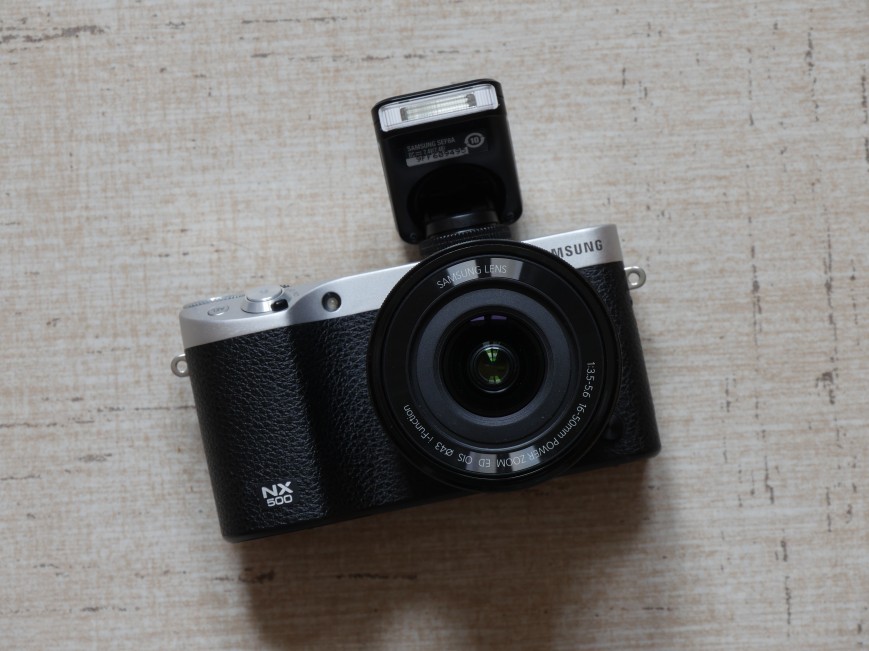
Panasonic Lumix GX8, ISO 200, 81 mm, F7.1, 0,6 c

Panasonic Lumix GX8, ISO 500, 140mm, F5.6, 1/320 c

Panasonic Lumix GX8, ISO 200, 88 mm, F7.1, 1/500 c

Panasonic Lumix GX8, ISO 200, 73 mm, F6,3, 1/400 c

Panasonic Lumix GX8, ISO 400, 34mm, F4.5, 1/80 c

Panasonic Lumix GX8, ISO 320, 21mm, F6.3, 1/60 c
Above I said that the Lumix GX8 soon will receive new features with the next firmware. Now, just recently, Panasonic has released an update that allows you to produce post-focus (over focus after the photo was taken). Exactly as in the Lytro camera, only it is implemented on a different principle. Personally test function I haven’t succeeded yet, but I will definitely take you through the following new Lumix G7. She also received a similar update.
What is the result?
The choice of technology in 2015 is mainly determined by the amount of money. And if last year it was possible to close one’s eyes to the extra 5-10 thousand rubles when choosing a camera, it is possible today to make it harder. Panasonic Lumix GX8 has good opportunities for photo taking and really trying to become a device for quality recording. But he managed it with difficulty. For example, shooting 4K is possible with a high bitrate, but no support for S-Log and the camera not even has a connector for microphone. So, for professional recording Lumix GH4 is much better.
For the money that ask for Panasonic Lumix GX8, you can buy almost any of the competing cameras. In comparison with the Sony A6000 camera Lumix GX8 looks a little weaker from the point of view of the photo (in particular the noise at high ISO) and stronger from the point of view of the video. But if you already have lenses for Micro Four Thirds and to change the system fundamentally does not want, it makes sense to buy a GX8 in the package Body and dual rate stabilization system, new viewfinder and better burst speed among mirrorless cameras. From the point of view of the optics to the Micro Four Thirds system still has no equal on the market.
